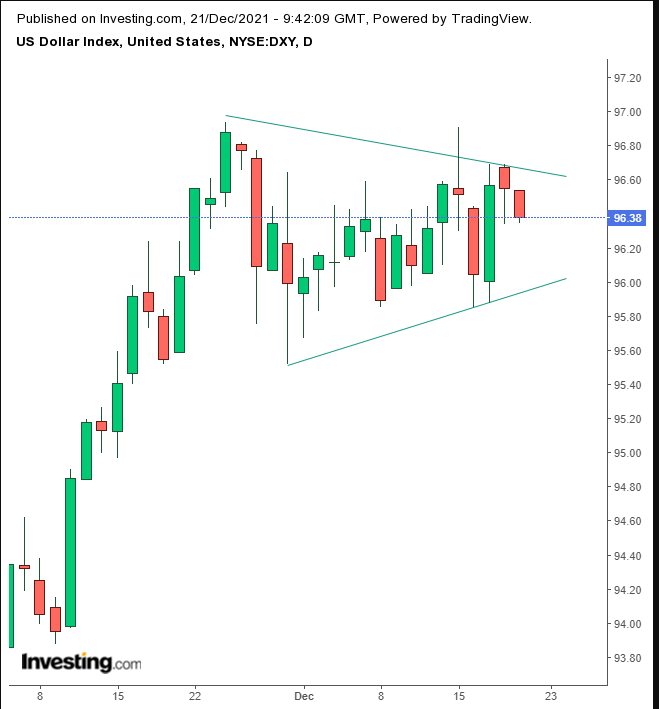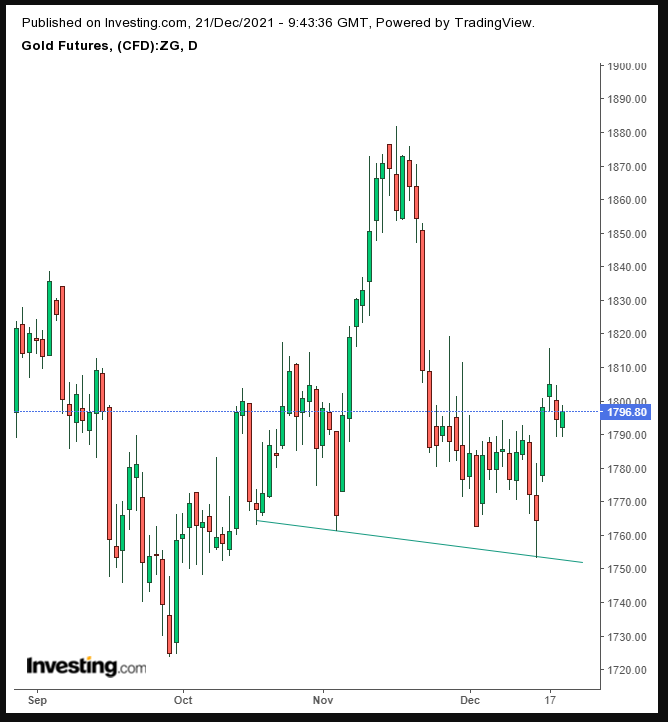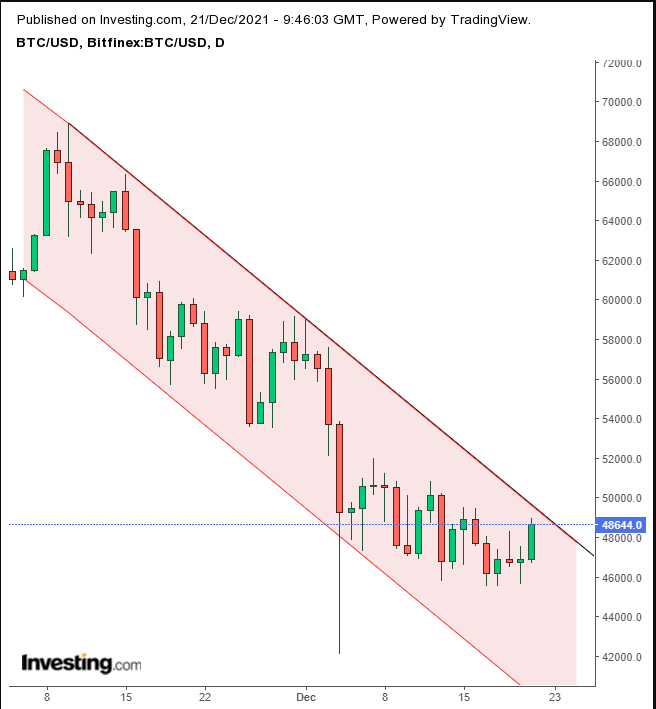- US and European sectors diverge
- Tech sector rebound may suggest investors are not betting on the economy
- Yields remain flat, not supporting risk-on posture
Key Events
On Tuesday US futures on the Dow Jones, S&P 500, NASDAQ and Russell 2000, and European stocks rebounded from an extended selloff, as traders bet that the current range of COVID-19 vaccines—along with news on Tuesday from Moderna (NASDAQ:MRNA) that "the US drugmaker could develop a booster shot to protect against the Omicron variant in a relatively short period"—will all help successfully manage the Omicron variant.
Adding a positive note, US President Joseph Biden spoke on Sunday with Senator Joe Manchin, and the two agreed to keep the door open for further negotiations on the President's Build Back Better Act, thereby getting his mega stimulus bill back on track.
Oil recovered while the dollar was weaker.
Global Financial Affairs
S&P futures clawed their way back from well off this morning's lows, setting the stage for a bullish comeback from the selloff which began last week.

If the index climbs a little higher, to above the 4,575 level, it will have completed a hammer—a bullish candle, the making of which is seen in all the major US benchmark futures. The hammer's location—a price level with vested interest—adds to its bullishness.
While all four US index contracts were in the green, the NASDAQ 100 regained its leadership position. The tech-heavy contract significantly outperformed the Russell 2000, which was the laggard of the group. This paradigm may suggest that investors are not placing bets on a continuous and sustainable economic recovery which would favor the economically sensitive stocks listed on the Russell.
However, a different picture is developing on the continent, where the STOXX 600 rallied on the back of a rebound in the mining sector, which tracked commodities higher. Perhaps the shorter decline in European markets—only two days compared to the three day slide by the S&P—altered the mix of profit-taking between the continents.
Stocks in Asia rebounded in proportion to the heavy selloff on Monday. Japan's Nikkei 225, which was the underperformer in the region yesterday, posted the strongest gain, rallying 2.1%.
All four US indexes closed deeply in the red yesterday with the Russell again leading the slide, down 1.55%.
The S&P outperformed, dropping just 1.14%, thanks to defensive and technology stocks, an unusual pairing, though we have previously reported a similar trend. The tech sector slipped just 1.38%, much less than the losses suffered by economically sensitive sectors.
Cyclically sensitive stocks suffered the most significant losses, with the energy sector shedding 2.5% of its value, closely followed by financials which lost 2.41%, materials, which declined 2.28%, and consumer discretionary's 1.75% slide. Conversely, the utilities sector dug its heels in, retreating only 0.69%, followed by communications services which fell 0.9%.
Yields on the 10-year Treasury note have failed to provide any additional clarity as bond traders are taking a watch and wait approach. We have commented before on the disconnect between the bond and equity markets. All things being equal, when stocks rise there is an expectation that so will Treasury yields, as traders sell out of secure bonds and invest in the potential profit growth in equities.
So bond traders' wait-and-see approach makes sense as we are dealing with two unknowns—Omicron and the likely success of Biden's $2-trillion spending bill.
While yields, including for the 10-year Treasury note, are flat, the dollar is falling for the second day.

The greenback may have found resistance by the top of a triangle. The direction of the breakout will likely determine the next leg.
Gold rose on dollar weakness but is still at risk of a reversal.

The yellow metal continues to trade within an H&S, which would be complete with a close below $1,750.
Bitcoin climbed today, gaining the most in a week, but bulls will have an uphill battle to continue to drive prices higher.

The price has been approaching the top of its falling channel since the Nov. 8 record.
Oil rebounded from the two-day selloff on news of reintroduced lockdowns in Europe, but we're betting the rally is temporary.

The current rise may be part of a return-move to a bearish, rising flag.
Up Ahead
- EIA crude oil inventory report is released on Wednesday.
- On Thursday the University of Michigan consumer sentiment report is published.
- US initial jobless claims are printed on Thursday.
Market Moves
Stocks
- The STOXX 600 rose 0.8%
- Futures on the S&P 500 rose 0.4%
- Futures on the NASDAQ 100 rose 0.8%
- Futures on the Dow Jones Industrial Average rose 0.3%
- The MSCI Asia Pacific Index rose 1.1%
- The MSCI Emerging Markets Index rose 0.9%
Currencies
- The Dollar Index fell 0.1%
- The euro rose 0.2% to $1.1300
- The Japanese yen rose 0.1% at 113.71 per dollar
- The offshore yuan was little changed at 6.3775 per dollar
- The British pound rose 0.3% to $1.3243
Bonds
- The yield on 10-year Treasuries was little changed at 1.42%
- Germany's 10-year yield was little changed at -0.37%
- Britain's 10-year yield advanced one basis point to 0.78%
Commodities
- WTI crude advanced 1% to $68.89 a barrel
- Brent crude rose 1.2% to $72.39 a barrel
- Spot gold rose 0.3% to $1,797.14 an ounce
